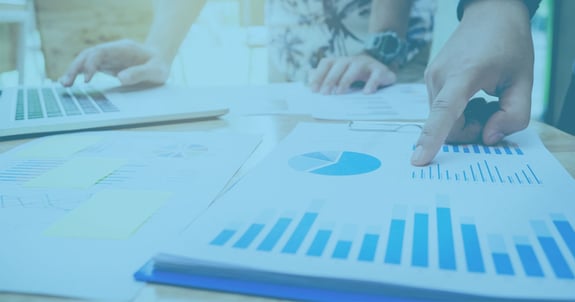Key performance indicators. It’s a term that’s getting a lot of use lately. Data’s importance in driving organization decisions continues to grow. But it can be easy to run into some common errors. Are we tracking the right data? Are we storing the data in an easily accessible and usable format? Are we able to use the data to make better decisions?
All good questions that we’ll dive into in this two-part business intelligence series.
What is a KPI?
A KPI is a performance metric that indicates progress towards an intended goal. These metrics may indicate an outcome or can affect the outcome. It is quantifiable, often numeric, and typically has a measure of success associated with it.
For example, think about a road trip. You may use these four KPIs:
- Your speed
- Amount of fuel you’ve already used
- Amount of fuel left
- Time to destination
By using these data points, you’re able to assess your journey, shape expectations, and make smart decisions. You would be driving in circles without them!
Types of KPIs
Let’s look at the two types of KPIs – lagging and leading indicators.
Lagging Indicators
Lagging indicators are output-oriented. It focuses on what has already happened. This type of KPI tends to be the most common because it’s the easiest to identify and measure. However, it’s hard to improve on these KPIs in a timely manner as they often follow an event. If we go back to our road trip scenario, lagging indicators are what you see in your rear-view mirror. The amount of fuel you’ve already used during the trip is a lagging indicator.
But how do lagging indicators apply to my organization? Lagging indicators are often performance facts for the organization.
- Annual revenue
- Monthly sales
- Number of satisfied customers
Lagging indicators for a municipality can include items such as the total miles of roads paved, the number of visitors to a local park, and the number of building permits issued. The outcome associated with these measures is something that has already happened.
Leading Indicators
Leading Indicators are measurements that help you track your progress along a journey and predict the future – a sort of crystal ball.
They are input-oriented. As a result, they can be harder to identify and measure. But they also put you in a better place to influence them in a timely manner. Two examples from our road trip would be the average speed on the interstate and the number of wrecks on your route.
Let’s use revenue as an example to understand how leading indicators apply to an organization’s KPIs. There is a specific revenue goal you need to meet by the end of the year. Each week you meet with key team members to look at how you are progressing towards that revenue goal. Everything is going great until one month you realize you’re coming up a bit short. A review of leading indicators like the number of deals in the pipeline or the number of new residents helps you understand why revenue may be suffering. A focus on shorter-term leading indicators helps you maximize your ability to reach your longer-term lagging indicators.
When determining leading indicators, ask yourself, “how does the KPI relate to the end goal?”
Identifying KPIs
There are two questions to ask yourself when identifying your organization’s KPIs:
- What are your goals?
- How do you measure performance?
Imagine you were stranded on a desert island, but you were still expected to keep up with how your organization was performing. Once a day, you receive a message in a bottle with 5 KPIs on it. These KPIs are all you have to determine and track performance. What needs to be included in that message to let you know how the organization is performing?
You may include:
- Weekly revenue
- Employee satisfaction
- Customer satisfaction
- Billable percentage
- Number of deals expected to close within 30 days
Now that you’ve identified the KPIs, you need to determine where you will get the data associated with each KPI. If we look at the ones listed above, the data will likely come from a variety of sources. The weekly revenue might come from a finance report, employee and customer satisfaction could come from a survey, and the billable percentage and deals expected to close would likely come from a CRM or time tracking tool.
Gathering and Storing the Data
Gathering
An important step often overlooked in the KPI process is the gathering and storing of your data.
The data needs to be in a structured format. Additionally, it is helpful if the data is in a raw format, from a trusted source, and has not been manipulated. Look at the data you are currently capturing. Does it give you the data you need for your KPIs? If not, what needs to be done to capture the necessary data?
Storing
Determining where to store the data can be a challenge. The data needed for your KPIs may be in various places which can make it difficult to use and compare. The end goal is to extract the data to one common data warehouse. It may be as simple as exporting a CSV file or as complex as building a custom application to extract and integrate the data.
Next Steps
If your organization is struggling with identifying KPIs and making sense of your data, consider an IT partner like VC3. We can help you connect the dots and make the data useable and meaningful. Fill out the form below and we’ll schedule a short call to learn more about your organization and needs.


